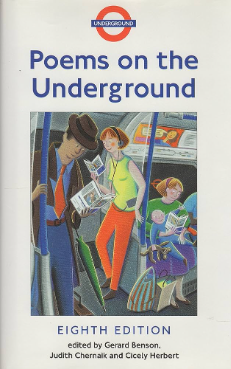Mystified. At first read, this 12-line, 400-odd years old poem had my adolescent mind perplexed.
Bermuda traingles and UFO sightings seemed less mysterious to the unending fog
I saw a Peacock with a fiery tail was wrapped in.
This blog post is thus, to emphatically declare, that discovering the simple, fun deception of I saw a Peacock with a fiery tail was one of the few riddles that I could unravel, prior to the first hideous appearance of facial hair, and before shaving cream companies across the planet rejoiced in ensnaring yet another customer for life.
As for solving the enigma of women, nonlinear Christopher Nolan movies and related jigsaw life puzzles, well...that's a work in progress.
Now, dear endangered community of dedicated
poetry readers, for your consideration, the timeless poem.
‘I saw a Peacock with a fiery tail’
by Anon
I saw a Peacock with a fiery tail
I saw a blazing comet drop down hail
I saw a Cloud with Ivy circled round
I saw a sturdy Oak creep on the ground
I saw a Pismire swallow up a whale
I saw a raging Sea brim full of Ale
I saw a Venice Glass sixteen foot deep
I saw a Well full of men`s tears that weep
I saw their eyes all in a flame of fire
I saw a House as big as the Moon and higher
I saw the sun even in the midst of night
I saw the Man that saw this wonderous sight.
Decoding 'I saw a Peacock'
The simple deception in the lines - fiery tail is a lovely imagery for a peacock's tail and a passing comet.
If the third line is rearranged with the second line for clarity, it would read - I saw a cloud drop down hail.
Does a comet drops down hail too? A tail of dust and gas, yes, but hail? This is where the nonsensical part comes in.
Instead of dissecting this word after word, let's do an exercise in rearrangement:
I saw a blazing comet with a fiery tail
I saw a cloud drop down hail
I saw a sturdy Oak with Ivy circled round
I saw a Pismire creep on the ground
I saw a raging Sea swallow up a whale
I saw a Venice Glass brim full of Ale
I saw a Well sixteen foot deep
I saw their eyes full of men`s tears that weep
I saw a House all in a flame of fire
I saw the sun as big as the Moon and higher
I saw the Man even in the midst of night
Thus unravels the mystery, but still evocative and fun to read. Everything makes sense, but for the last line.
Alternatively, one can read each line from the middle to the next line's middle, and lo and behold, the mystery is revealed.
The poem is at once a riddle, a trick verse, brimming with comic nonsense vibes.
The use of pismire for an ant dates back to the 14th century. Hold your noses for the origin story - Pismire is from 'pyss' (urine) and mire (an ant). 'Pyss' refers to the pungent smell of an anthill.
Venice glass - Reference to venetian glass, glassware variety made in Venice (specifically Murano Island) since the 13th century.
The rest, I would like to believe, is self-explanatory.
 |
| An illustrated book interpretation by Gond tribal artist Ramsingh Urveti (Tara Books) |
But, then again...
For sheer joy it evokes in splendid, absurd and magnificent imagery, line after line, the poem is best experienced without untangling its mad, bizzare arrangement.
History, trivia:'I saw a Peacock with a fiery tail'
It's ironical that trivia means information that is of little value or importance. Maybe I should call what is to follow non-trivia, and run with it.
The first known published version of the poem, appeared around 1665 in a commonplace* book, claims The Oxford Dictionary of Nursery Rhymes.
The poem's earliest known anthology appearance is alleged to be a two-part collection called Westminster Drolleries (1671, 1672). Subtitled - Being a choice collection of song and poems sung at court and theatres, this rare collection is still available on online stores.
Drollery means a comic drawing or picture. In the poem's context, it may match another definition - An oddly amusing story or joke, something funny or whimsically amusing.
The poem found contemporary fame in legendary illustrator of Roald
Dahl fame -
Quentin Blake's The Puffin Book of Nonsense Verse (1994).
Writers on 'I saw a Peacock with a fiery tail'
Canadian poet and novelist Margaret Atwood chose 'I saw a Peacock with a fiery tail' for the Scribner Poetry compilation - 'First Loves: Poets introduce the essential poems that captivated and inspired them' (2000).
As Atwood reveals in the book - ...and this is the first poem I can remember that opened up the possibilities of poetry for me—what it could do, how it could mean several things at once, how the familiar and the strange depended upon each other. How words could alter the landscape.
English writer Virginia Woolf didn't speak directly of the poem, but generally stated in the essay, A Room of One’s Own (1929),"I would venture to guess that Anon, who wrote so many poems without signing them, was often a woman."
Endnote: 'I saw a Peacock with a fiery tail'
It's hard to tell whether a man or woman wrote 'I saw a peacock with a fiery tail.'
All that can be stated with certainity - Reading this trick verse-nonsensical-comic-riddle poem is bloody good fun.
(Article by Snehith Kumbla)
*Commonplace books are used to compile knowledge, usually by writing information into books. They were kept particularly during the Renaissance and in the nineteenth century. Such books are similar to scrapbooks filled with items of many kinds: sententiae (often with the compiler's responses), notes, proverbs, adages, aphorisms, maxims, quotes, letters, poems, tables of weights and measures, prayers, legal formulas, and recipes. (Wikipedia)







































